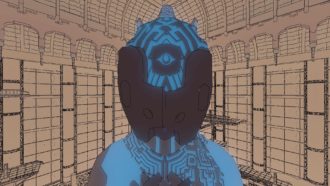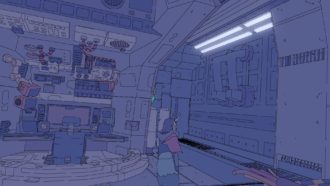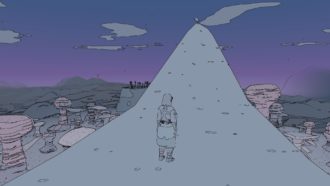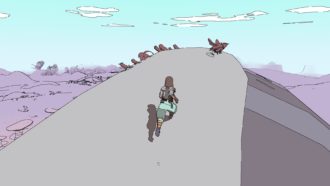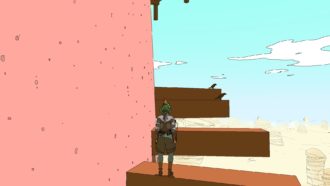Platforms:
Xbox One, PC, Xbox Series X|S
Released:
September 23, 2021
Publisher:
Raw Fury
Developer:
Shedworks
Of all the stories that games can tell, a lot of indie games tend to orbit around adolescence and coming of age. Popular titles, such as the recently released Life is Strange: True Colours, tell a coming of age story through narrative choices. It makes sense because so much of adolescence is bearing the weight of your free will and the perceived consequences of choosing incorrectly. But Sable explores a different side of adolescence: self-discovery. The mechanics in the game exist to allow exploration and navigation. The character Sable goes on a journey that the gameplay mirrors. She sets off to explore the world, and in doing so, explores herself.
The Bright Blessed Day – The Prologue
The setting of Sable is the land of Midden, a desolate landscape dotted with sparse colonies. This world has a rite of passage known as “The Gliding”. When a child becomes of age, they receive a Gliding Stone and a hovering “Bike” which allow them to explore the world beyond their enclave. By opening the world, a Glider can explore the possible futures they can live. As they help people, Gliders receive badges, to signify their service. Collect three badges of one type and trade them for a mask. At the end of The Gliding, Gliders return home and select one mask from the many they have acquired that symbolises the purpose they will fulfil in their community. Put another way, Sable tracks a journey of exploration more of its titular character than the world they live in.
“Put another way, Sable tracks a journey of exploration more of its titular character than the world they live in.”
Sable does fantastic work blending narrative and mechanics. Before The Gliding begins in earnest, Sable must perform preparation rites. This in essence lets the tutorial slide right into the lore that permeates this experience. By sticking to the enclave, the map is somewhat restricted, making everything much more straightforward and controlled. You’re given a chance to test out your wings before you’re pushed out of the nest. The lore is also already starting to filter in here. The symbolism, the aesthetic, and the core tenants of the mythos of the greater world is already diffused through these opening missions.
Unfortunately, you cannot stay home forever. This first area is but the starting point for the greater journey, but the strong world-building makes the transition to the full experience truly potent. Complex emotions swirl as the title card appears and the beautiful theme plays, signifying the true beginning of the game.
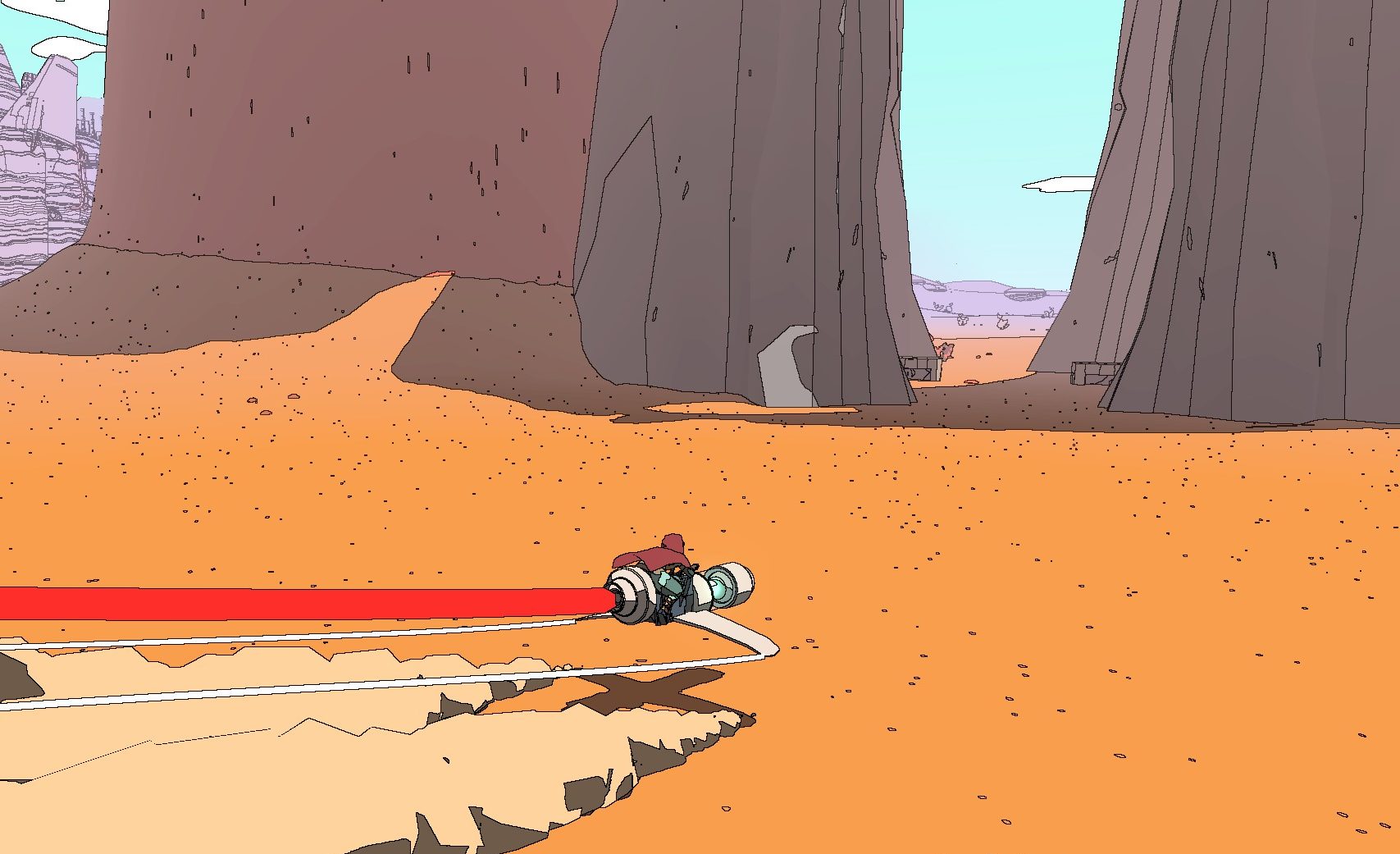
How Do You Do? – The Small-Scale Gameplay
Before venturing out into the open world proper, let’s discuss the small-scale gameplay. The standard controls of running, jumping, and collecting are here. The Gliding Stone allows Sable to engage a rather mystic-looking slow fall. This works as expected, with no genuine issues to speak of. The other part, climbing, is a bit more up to interpretation.
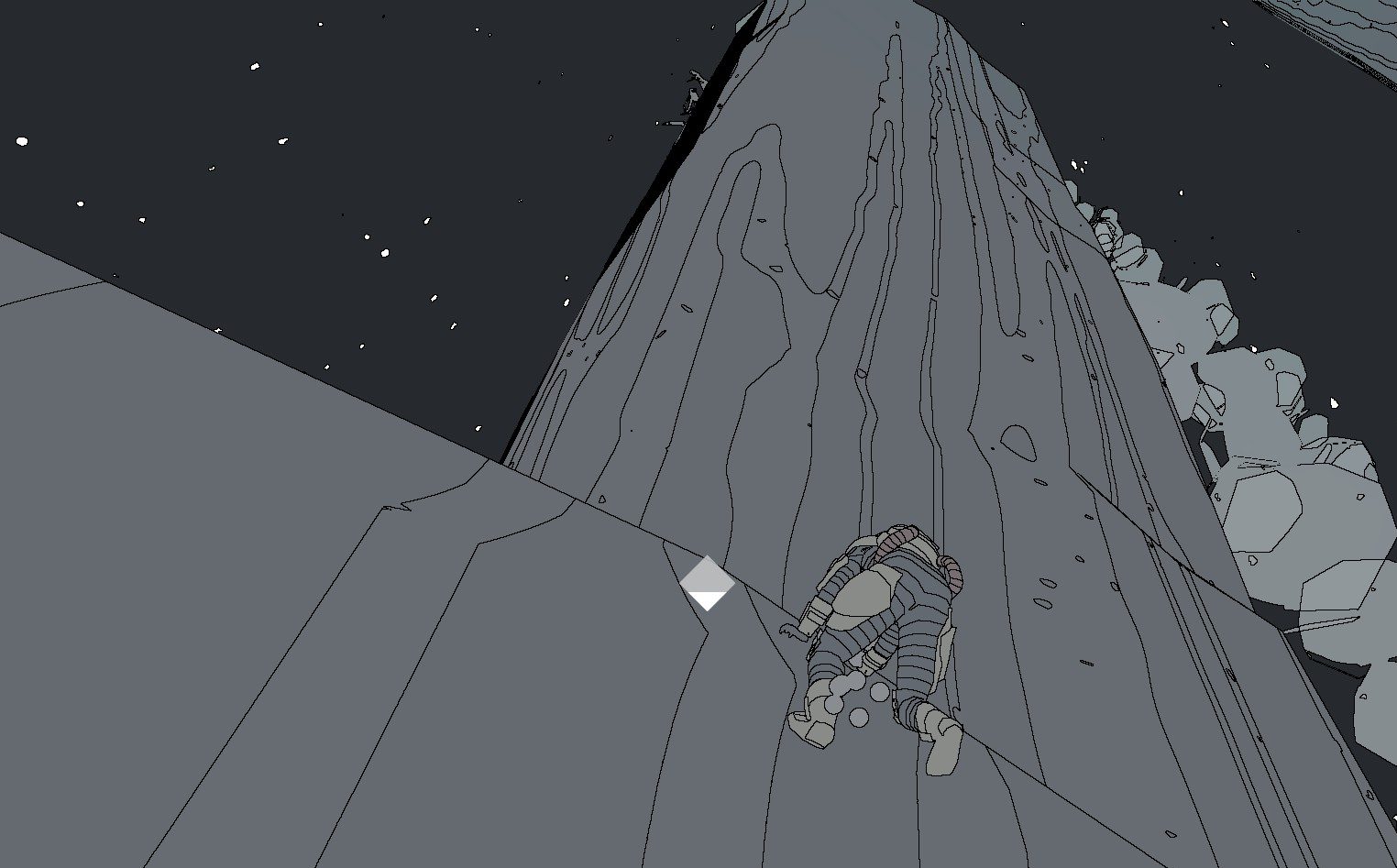
Pushing up while facing a wall or steep incline lets you climb it. The challenge comes from stamina. Should you deplete your stamina mid-climb, you’ll find yourself falling, or perhaps gliding, until you find a nice, flat surface to recuperate on. Finding Chum Eggs and returning them to the Queen is rewarded with added stamina. This may be a good system, but I got about 14 hours into my 15-hour campaign before I found such an upgrade. It’s not fun to awkwardly try and climb a wall a dozen times in a row. The open-ended design of the world and exploration is rewarding, but it ultimately means you can miss important things much as I did.
Being an exploration game, navigation is core to the experience. Not only do you need to find new locales to look for quests, but you also need to find out how to clamber up to all manner of summits. If a wall is not climbable due to its material or its height, then you should find a strategic approach around it. Finding the right angle of attack, to minimise the height of the walls you’re climbing, is often a requirement to conquering the various peaks.
Colours Of The Rainbow – The Visual World
As Sable appears from her enclave, we get the opportunity to explore a beautiful world. I’m reminded of modern cyberpunk artwork, like that of Josan Gonzalez and Jean Giraud. Everything in the game has this almost lo-fi nostalgic feel. The art style is one of interesting contrast. The colours are intentionally flat. Conversely, the outlining is fascinatingly complex. Outlines are entirely single-pixel lines, which has no texture itself. However, the sheer volume and precision of the lines give back this textural feel. It’s extremely easy to amass a stockpile of screenshots to fawn over in this game.
“I get that pull back to adolescent nostalgia, without the weight of the expectations that pixel art may impose upon it.”
Some have decried Sable’s art and its deliberately low frame animations as “low quality”, but I cannot agree with this mindset. By all accounts, pixel-art games are less artistically advanced than fully rendered 3D models, yet they can be beautiful all the same. Similarly, I think Sable is evoking lo-fi feelings to tap into nostalgia. Cunningly though, the developers have averted the common retro feel of the 8- and 16-bit era. Rather, like Return of the Obra Dinn before it, Sable, with its pixeled line art, conjures a familiar feeling as the 1-bit computer graphics of yore. This means I get that pull back to adolescent nostalgia, without the weight of the expectations that pixel art may impose upon it.
Of course, back in the older days of 1-bit graphics, you couldn’t bring the kind of colour palettes Sable has. Midden is primarily a desert, so the overall palette of the entire world skews towards being a bit warm. Over a day, the cyan of the midday sky fades to a deep muted indigo-violet. It can not be said that Sable’s design flaunts style without substance.
Midden’s aesthetic is both beautiful and smart in its approach. Perhaps you noticed that I referred to the “overall” scheme as being warm. Well, that’s because it has a colour scheme for each of its different sectors. The desert dunes, the boneyard of great beasts, the maze of geologic towers, and the land of scrapped technology are just a few of the regions of Midden.
The smart thing about this world design is its functionality. All these areas have distinct colour schemes. Granted, they are not so distinct to be jarring, but distinct enough that the transition is relatively obvious. It allows for natural navigation of the area. What also helps is the verticality. Most of the geography of this game is relatively flat. You can find most areas by assessing the skyline. Encampments house many NPCs and often have a raging fire, with a tall, distantly visible column of smoke. The cartographers in each area are in balloons high off the ground. Many points of interest are easy to find because of this. Should this not be the case, gaining altitude makes it easy to survey the surroundings. Setting up waypoints is similarly easy. The navigation mode allows for custom markers to be set from a first-person perspective and these can also be set on a map, if needed. Alternate colours or types of waypoints might not have gone astray, but it is ultimately a well-made system.
With most of the navigation handled in the gameplay, there is also the ability to consolidate the UI. There is no mini-map and there is no big glowing objective marker. Should you need these, the compass is close at hand to point you towards the quest objective, or your various markers. The compass is not part of the passive UI, instead, holding a button brings the compass up, and releasing it tucks it away just as quickly. Once more, the game is moving everything out of the way to keep you in the world. I love the way this all works, although to be fair, it does mean that distance is hard to judge. Unless you pause to peruse the full map, there is no visual difference between a quest marker 20 meters or 2,000 meters north.
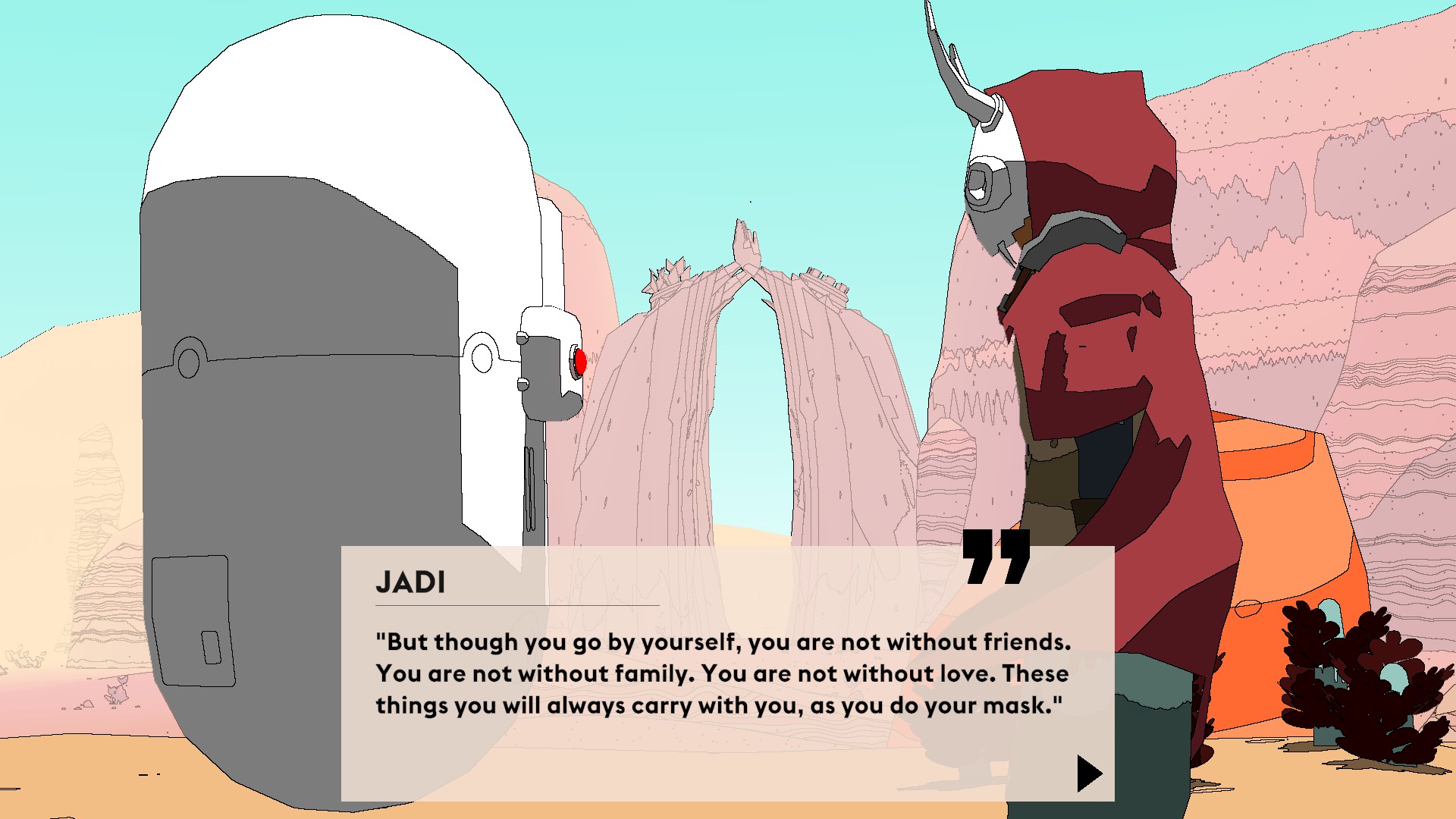
I Think To Myself – The Meaning Of Life And Other Quest Goals
The fundamental gameplay loop of Sable involves self-exploration. More specifically, you are to collect masks, and then select one that represents your chosen path. In actual gameplay terms, you are helping various people from around Midden and its communal stations. Some of these quests will reward you with badges, which I believe is supposed to represent the skill you have trained in. Should you collect 3 of a specific type of badge, you can take it to a mask-maker to receive a new mask. This plays into your goal: to select a mask to undertake the final ritual. In essence, more masks widen the net of your possible futures.
“It’s interesting how little of the story feels integral to its protagonist.”
All these ideas and the game’s design culminate in a very chill, isolating, meditative experience. I wonder, to a certain extent, if this feeling was assisted by giving all characters masks. You distance yourself from the other characters, but you still see the purpose in providing service to them. Sable is no different in this respect. It’s interesting how little of the story feels integral to its protagonist. There’s a sense that any Glider could be the one aiding these people. That despite being an isolated nomad, you are invariably not an island. You are but a cog in the greater machinations of the world. You are not just yourself, you are also the tethers to those around you.
I’m getting a bit off the track into existentialism, but Sable is open to that. It lets you ponder over life. Other games have tried to set the stage for contemplative ambient narratives, but they’ve fallen a bit short. Sable has fully committed to the idea and has done tremendous things because of it.
Japanese Breakfast has headed up Sable’s OST and have done a superb job. You can spend hours just cruising around appreciating the soothing score. The menu, the title and the end credit themes are particularly well crafted. I’m absolutely looking forward to perusing the soundtrack in full when it releases.
The Faces of People Going By – Other Bits of Gameplay
The game also flirts with puzzles a little bit and generally pulls things off well. These, mind you, are separate from the navigation and platforming challenges. That’s not to say there’s no overlap. Some will be a bit of a treasure hunt of environmental riddles whilst others require you to find the pieces to put it all together. The puzzles themselves often gesture to the environment and traversing it and seem well thought out.
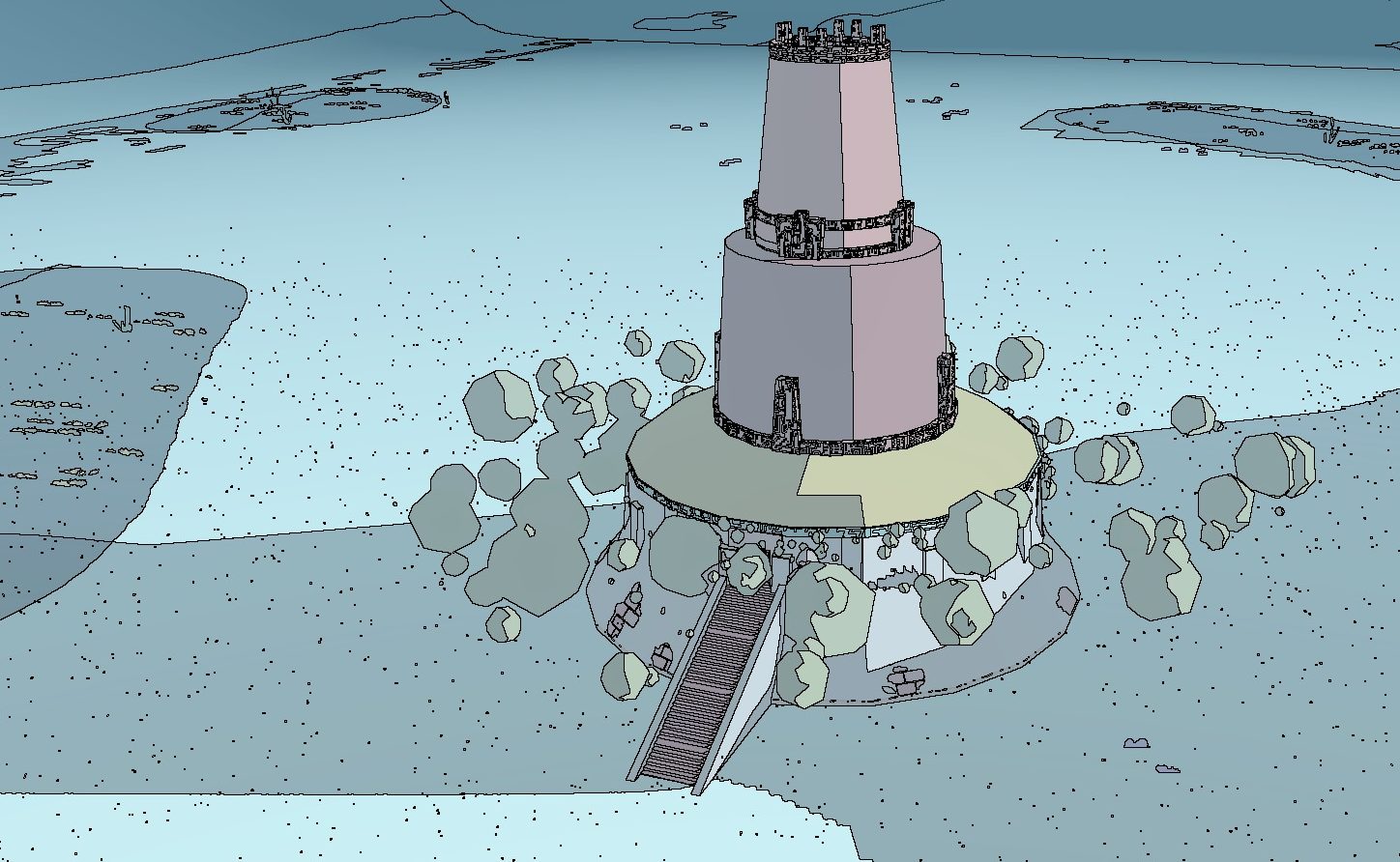
Similarly, Midden is dotted with various points of interest that reward players for poking around. For example, the previously mentioned egg collectible can be traded for stamina upgrades. However, there are complete side quests that you can speed right by. Downed ships hold recordings of a now-absent crew and temples hide various mystic rewards for solving their riddles. This all creates a feedback loop: hidden treasures promote exploration, which keeps you on the lookout for more treasures. A lot of these points of interest give vague markings of this greater story beyond the surface.
The developers have done fantastic work here. The lore, the symbolism, and the way it is discussed provide a deep well to draw from. Consider that most of the characters are covered head to toe in robes and masks. Whether or not the characters are even human is completely left on the table. Yet, the characters have enough personality through dialogue to evade such an issue. I love listening to the machinists talking about the soul, and the energy of the various machines. It belies this multifaceted mythology that brings beliefs from all manner of non-player characters.
The Dark Sacred Night – Does It Hold Together?
I suppose then the last question that needs to be asked is “Does Sable stick the landing?”. I’d say, for the most part, it does. There were the occasional bugs that frustrated me a couple of times and I learned how to upgrade stamina rather frustratingly late into the campaign. Neither of these were deal-breakers though, and smart features in the game’s design helped to take the sting out of these setbacks. For instance, I reached the cartographer on multiple occasions and found the map’s price to be higher than expected, beyond my current means. This would suck, given the several minutes of slowly ascending to the top of whatever structure I’d have to summit. However, by reaching the cartographer, the game would grant me a fast travel point. When I had sufficient funds, I could immediately return to my business.
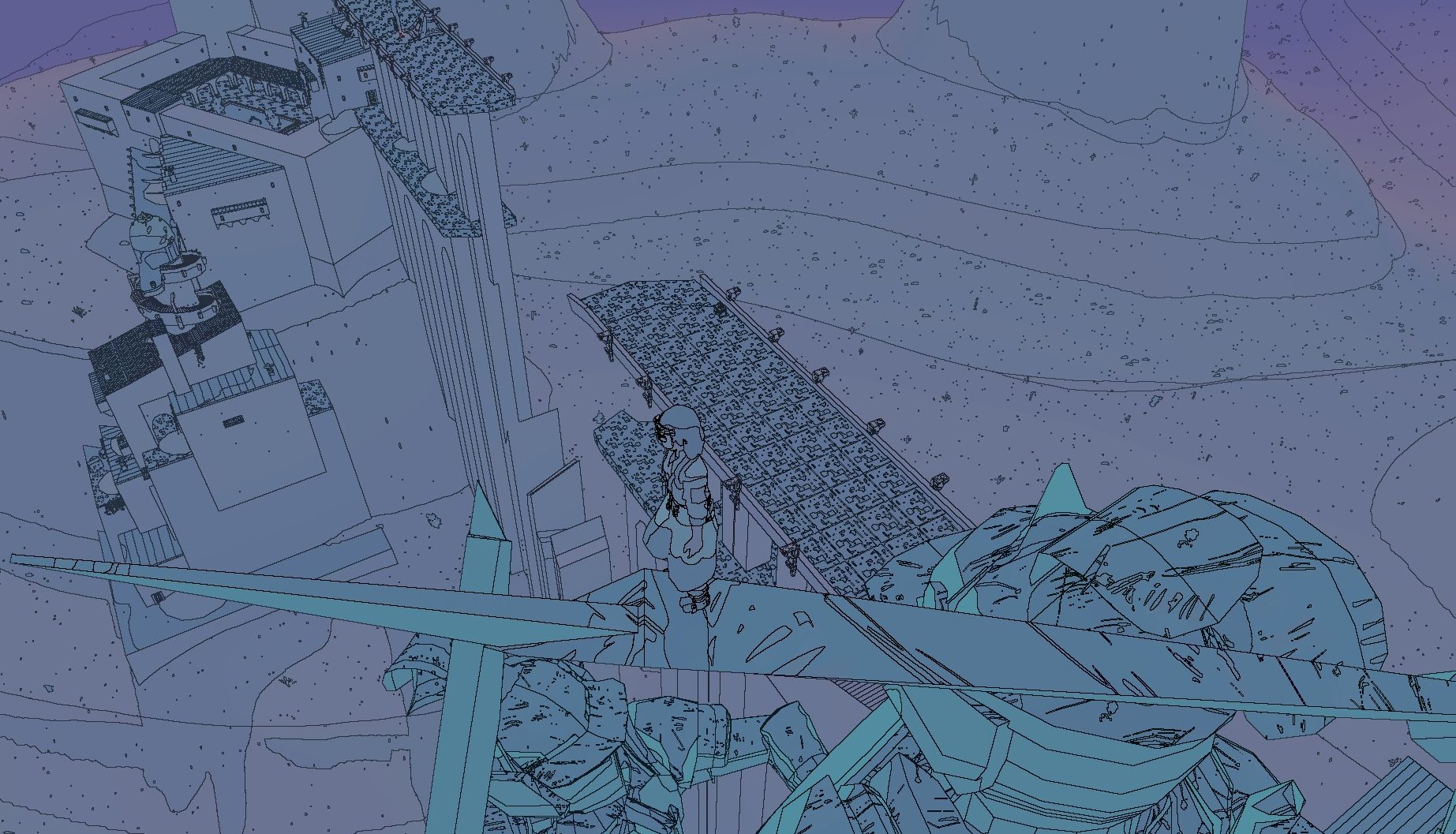
To fully torture the gymnastic metaphor I set up earlier, another part of sticking the landing is not spending too much time in the air. Game length is important, and how much filler content a game imposes on its player can make or break a release. Sable features a lot of travelling around, climbing, falling, and general self-imposed wandering. At some point, the game will present the opportunity to return home and conclude your Gliding. For me, this opportunity was presented several hours into the game – I’d hazard a guess at maybe 5-7 hours? I could have ended then, I did already have a mask, but I instead elected to press on, trying to chase down every questline and investigate every interesting-looking landmark. As of writing this, I have ostensibly finished the game at 15 hours of playtime. I say ostensibly only because I fully intend on returning to the game world to slowly uncover every last hidden detail.
Sable is what you choose to make of it. It can be a short stint or a longer adventure, though it’s clear the game wants you to take your time. This is a very chill title. It takes time to explore the various nooks and crannies of the world, just as it takes time to explore who you are. So, take your sweet time, enjoy your freedom, and then commit yourself when you have the confidence.
9
Amazing
Positive:
- World is presented beautifully
- Mechanics promote natural navigation and generally help keep focus on the world
- Story is a light touch and leaves room to contemplate and chill out
- Beautiful score by Japanese Breakfast, particularly the themes
- Every aspect of the game supports the other aspects well
Negative:
- The occasional bug could throw things off a little
- Missing some POIs, such as the stamina-granting one, can throw off progress
The occasional bug and missing stamina upgrades are really the only negatives I can lodge at Sable. I can think of very few games that have presented such a beautiful harmony of its attributes. Everything supports everything else. The story implores you to go out into the world, to see all that there is to see. The gameplay ensures that the focus is always on the vistas that lay before you, and it’s all stylised beautifully. The game creates a view of which I cannot tire. This is truly one of the most well-conceived and executed games that I have seen in a very long time. It’s one of those games that truly is using everything to its maximum potential.

